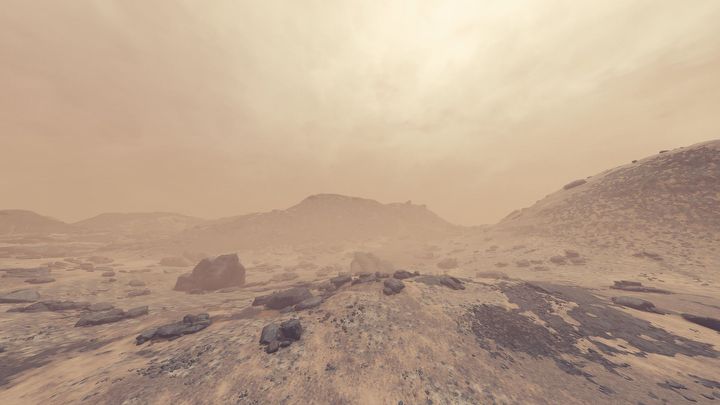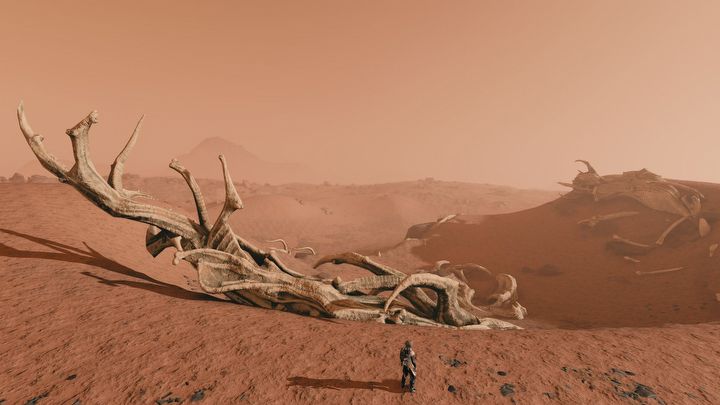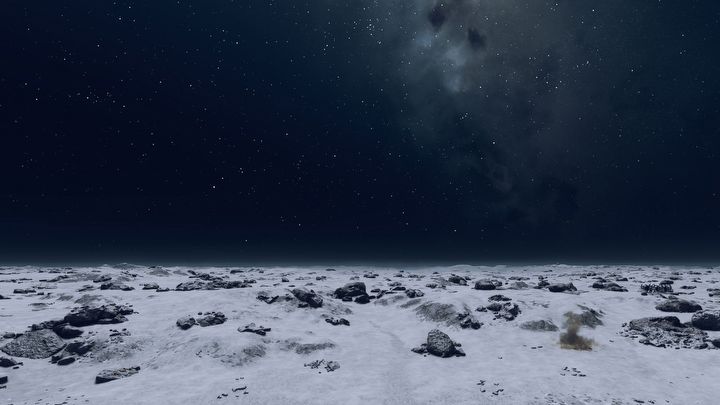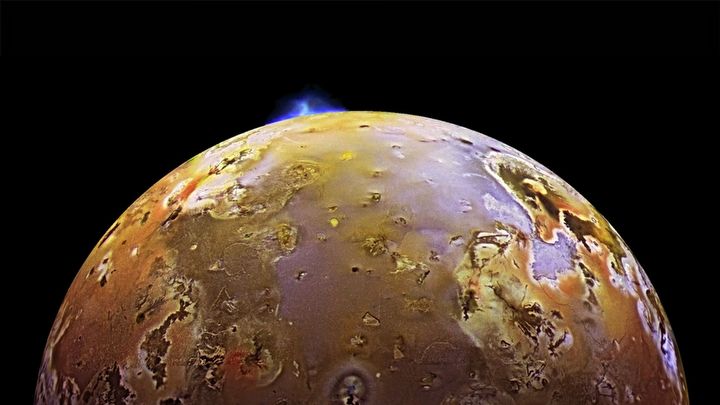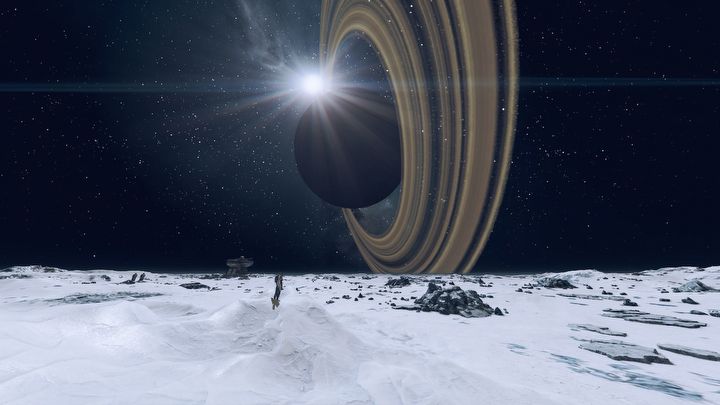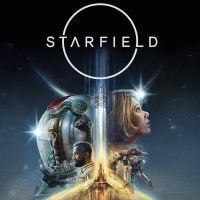Solar System in Starfield vs IRL - We've Compared Them And... It's Not Great
The Solar System is one of the first planetary systems that many players will visit after launching Starfield. Let's find out how Bethesda's developers managed to convey its details (if they did at all)!
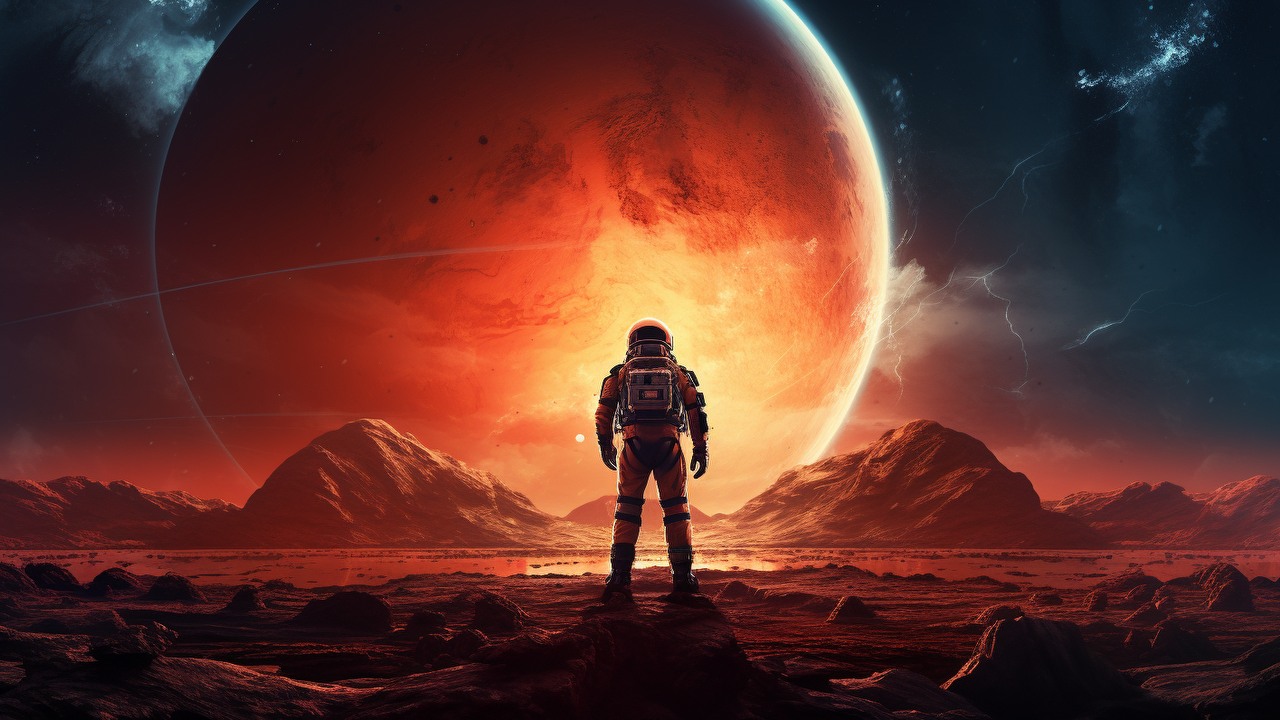
Starfield offers an open world on an incredibly massive scale. With over a hundred planetary systems, which makes for about a thousand globes (planets and moons) which you can land on. Bethesda's interstellar adventure surpasses all the company's previous games in terms of content. But how does the Solar System, our closest (and at the same time best known) cosmic neighborhood, look in the game? As it turns out, it's not bad, although it could be much cooler.
Let's dive into a trip to the most interesting bodies of Starfield's Solar System and see what the developers managed to include in their work, and what they failed to. We will start the expedition from...
Venus – a cosmic hell
Main features of Venus:
- "Earth’s Twin” – similar in size and structure;
- With an average temperature of around 870 degrees F and violently crushing pressure of 1349 psi, Venus undoubtedly deserves to be called hellish;
- The vast majority of this planet consists of volcanic plains with low hills.
- Additionally, Venus has 167 volcanoes, the largest of which are more than 60 miles in diameter.
In the game, a scan from the orbit already informs us about the "hellish" temperature prevailing on the surface of Venus. After landing and leaving the safety of the ship, we are bombarded with messages about the hazards we’re exposed to, such as "corrosive atmosphere." The thing is... it doesn't mean anything.
In the world of Starfield, a simple spacesuit is enough to move freely on the surface of Earth’s sister. Meanwhile, in reality, landing on Venus would quickly be tantamount either to melting or being crushed. That’s exactly the fate that befell the Soviet probe Venera 13, contact with which was lost after two hours after touchdown.
However, the surface of Venus in Starfield looks more or less as it should because it's covered with "rocky deserts" and "hills." In addition, the dense atmosphere makes it impossible for us to admire the Sun and more stars. Nonetheless, powerful, active volcanoes, which would be quite the attraction, are nowhere to be seen.
Colonization of Venus
Venus could have been much more interesting in terms of colonization. According to the developers, the challenging conditions of its surface don't prevent permanent outposts from standing. Meanwhile, one of the proposed (and feasible) ways for humanity to establishe some sort of presence there would be building floating habitats in the upper layers of Venusian atmosphere. We can only imagine how majestic those would look in Bethesda’s game.
Mars – no mountains and canyons, but it's... nice
Mars in a nutshell:
- Has the highest mountain of the Solar System: Olympus Mons, a gigantic, extinct volcano. Olympus Mons is more than 72,000 ft high and has a diameter of an imposing 387 miles.
- Valles Marineris is a gigantic system of canyons with a length of about 3,000 miles and a depth of up to four miles. From orbit, the system of canyons looks like a furrow after a powerful laser attack!
- Cydonia is a region on Mars that’s home to a geological formation discovered by Viking 1 probe in 1976. Its formation, favoring the so-called pareidolia and the perfect lighting at the time when its photograph was taken made it instantly hailed as the "Martian face." For conspiracy theory enthusiasts, however, it became "irrefutable" evidence that there once was a civilization on the Red Planet.
At first glance, Mars in Starfield cannot be criticized for much. Scans from orbit inform us of the relatively comfortable conditions on its surface, while after landing, we can admire mostly rust-red deserts. The dusty atmosphere scatters sunlight, so there are no picturesque sunrises and sunsets.
Unfortunately, the developers didn’t decide to render Mars' geological features in the game. Indeed, Olympus Mons and Valles Marineris are visible from orbit, but after landing on the Red Planet, you won’t find them anywhere. However, the absence of the former can be explained.
- The dustiness of the atmosphere makes it impossible to see Olympus Mons from a distance.
- The shape, and the gigantic diameter of Olympus Mons means that it would be hard to realize its sheer height while standing on top of it.
- Its base is clearly marked by cliffs up to 19 ft high, so at least they should be visible (unfortunately they aren't either).
The absence of Valles Marineris is a great oversight. We can only imagine how beautiful the shots could have been if only this impressive canyon system had been rendered.
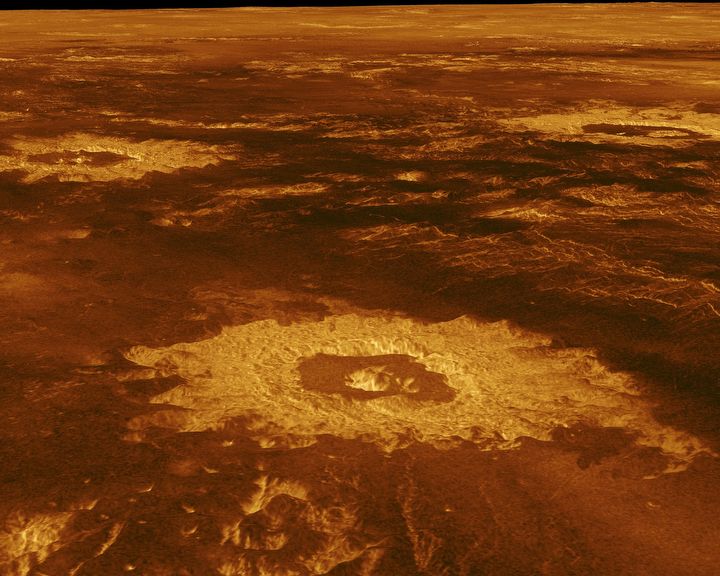
A three-dimensional image showing the so-called Crater Farm on Venus. It was obtained based on radar data collected by the Magellan probe in 1991.Source: NASA/JPL
Interestingly, the developers did include the "Martian Face" in their game. Given the fact that we're dealing only with a broad elevation (rather than the “Martian Sphinx,” as some claim), it's difficult to spot it. To do this, you need to develop the Boost pack skill to the maximum and then take to the skies, which one of the Reddit users achieved. The easier way to see it is to display the surface map after landing in Cydonia, looking east.
The mysteries surrounding Cydonia in Starfield don't end there. On the plateau, you can find... a cemetery, where two enormous skeletons rest. Unfortunately, the meek witnesses of the events that took place here in the past are unable to tell us how they ended up on the Red Planet...
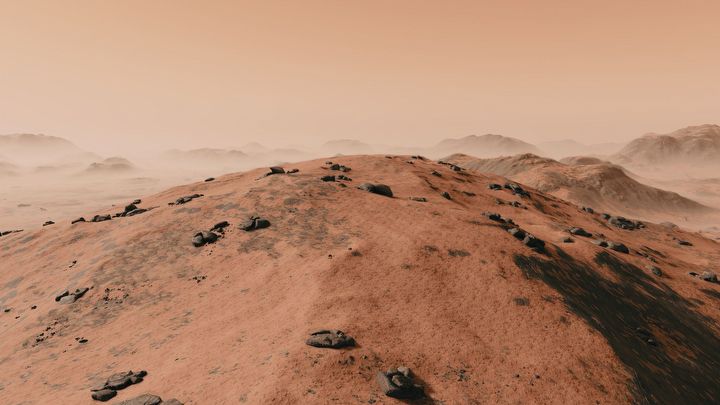
Admittedly, you can't see it, but this is what the famous Martian face seen from the surface looks like in Starfield.Source: Starfield / Bethesda
Planet of the robots
Mars is currently the only known planet inhabited entirely by robots. The Curiosity and Opportunity rovers have their own easter eggs in Starfield. The fragment of the first one can be admired in the Lodge in the city of New Atlantis, while the second one... you'll see for yourself, going through the main storyline!
Io – plain pizza
The greatest attractions of the real Io:
- Io is the most volcanically active moon in the Solar System. The explosions there create impressive columns, some of them 250 miles high.
- This moon has a relatively "flat" surface; the majority of it is made up of sulfur plains, while any craters are quickly filled with material from volcanic eruptions.
- Io is colorful, due to various substances, such as silicates, the already mentioned sulfur or sulfur dioxide, which make this moon seem yellow, yellow-green, white, and gray.
How does Io look in Starfield? Let's start with the fact that scans from the orbit indicate that a large part of its surface is covered with... craters, which in theory shouldn't be there. Fortunately, after landing, it turns out that the information was incorrect and Io in the game is in fact flat. Unfortunately, you won’t find the colors that should dominate there; instead of shades of yellow and green, we mainly see shades of white and gray as we explore this moon. All this makes the Starfield’s Io feel like... Earth's moon.
Sadly, this isn't its biggest problem. The great disadvantage of virtual Io is the lack of active volcanoes, which means that the view of a gigantic column rising hundreds of miles is still only available on NASA pictures.
Space pizza
Because the real Io shimmers with colors, its appearance is often compared to pizza. Unfortunately, in Starfield, the view of Io from orbit doesn't convey this impression.
Titan - not everything went as it should
Main features of the real Titan:
- Titan has the densest atmosphere of all the moons in the Solar System; the layer of gases covering it is even thicker than the one protecting Earth. The chemical compounds contained in it block as much as 90% of the sunlight from the surface of this globe.
- Due to the conditions on Titan (the average temperature is -290 degrees Fahrenheit, while the pressure is 21 psi), there’s no liquid water on its surface (although it is suspected that several kilometers under its icy crust, there might be a subsurface ocean, possibly warm). Nevertheless, as Huygens lander discovered, it's covered by lakes and river networks, filled with... liquid hydrocarbons (like methane).
The Titan version from Starfield, in theory, has everything that should be there. The scan from the orbit informs us about the low temperature on its surface, while after landing we find ourselves in an ice-covered wasteland, over which hangs a heavy, thick layer of clouds.
However, the color of the clouds leaves a bit to be desired. The atmosphere of Titan should have an orange color (which can be seen in the game when you're in its orbit), but it often takes on shades that are surprisingly close to pink.
Despite everything, it can get orange here from time to time, although you have to catch these moments (for instance, around sunsets). Another thing is that the dense atmosphere of this moon causes it to be semi-dark. In the game it's quite bright on Titan – just like on a cloudy day on Earth, which can be considered an oversight.
The last issue is related to the rivers and lakes of methane that cover Titan. Unfortunately, in Starfield, where the moon is simply covered with ice, you won't be able to find them. Nevertheless, the seasons last for 7.5 Earth years on Titan, so who knows – maybe we just hit the wrong season ;)
Europa, Enceladus, Iapetus, and Mimas – small, but crazy
It's time to focus on solar attractions of a slightly smaller caliber, and Europa goes first. This moon of Jupiter actually has an icy crust, crisscrossed with giant crevices (lineaments), under which there is most likely an ocean of liquid water. The game succeeded in rendering her young – and therefore "flat" – surface. However, the mentioned large crevices in the ice are nowhere to be found after landing on Europa; which is a pity, because you can see them from virtual orbit.
The situation is similar with Enceladus, an icy moon of Saturn, whose similar cracks weren't included in Starfield. Enceladus has an additional feature that wasn't included in the game, which is even worse – powerful streams of steam and dust; they resemble Earth's geysers, but their sizes are truly unimaginable, as shoot material up hundreds of miles into space! However, Starfield's Enceladus has a great advantage – Saturn from its surface looks... well, just stunning.
Iapetus and Mimas are two small and inconspicuous moons of Saturn. Due to the fact that each of them has a gigantic crater, they resemble fossilized Death Stars. Additionally, Iapetus has a unique geological structure, which resembles... a walnut shell. Sadly, none of these features were rendered in the game.
{ramkazielona}
Let's not forget Pluto!
One of the features of Pluto, the dwarf planet that not so long ago held the title of a full-fledged ninth planet in the Solar System, is Tombaugh Regio – a large region, distinguished from the rest of the surface by its brighter color and smaller number of craters. Due to its unusual shape, it's often called a "heart." That’s not in the game (though the developers tried to color the planet according to its real counterpart).
Earth and Moon – bathed in the silence of the stars
{ramkaniebieska}
WARNING: The subject of the Earth and the Moon had to be left for the end of this text, since discussing them involves some spoilers. So if you aren't familiar with the information about the Starfield's vision of the two, and would like to discover it on your own, read no further.
{/ramkaniebieska}
Let's start with the Moon, which isn't very exciting on its own. Aside from the issues related to our sentiment for this astronomical object, its only attraction is its low gravity and view of Earth. However, a landmark has been placed in the game, which, when visited, allows us to see the Apollo 11 mission lander.
To access it, you must visit the Lodge and, in one of the rooms adjoining ours, find on a desk a book entitled Sir Livingstone's Second Journal. After reading it, a quest will appear in our journal. Right next to the lander stands the American flag hoisted by Neil Armstrong and Buzz Aldrin. Although it should have faded within a few decades, it can still be seen in its full glory in the game.
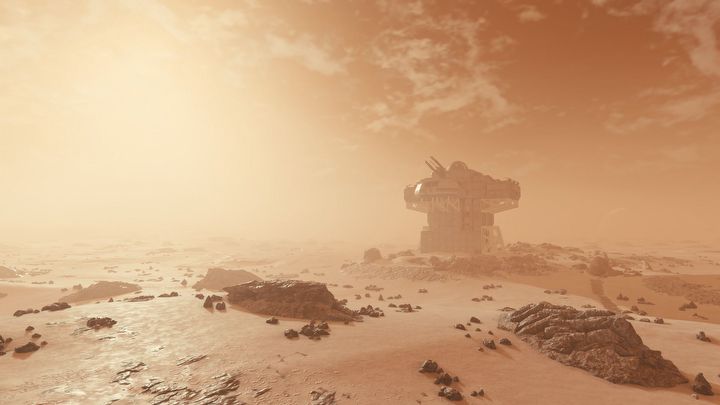
The Starfield Titan was executed not too badly, although it is a little short of perfect.Source: Starfield / Bethesda
As for the Earth – after losing its magnetosphere, the (once) Blue Planet became a huge desert. The exploration of this barren wasteland is pointless in the long run. The only notable places on the virtual Earth are landmarks that are added to the globe map after reading specific books. In this way, for instance, we can find out about the location of the pyramid complex in Giza.
Admittedly, little remains of the famed pyramids, which no longer look as impressive, but you can tell it's them. However, if you would like to go to the Himalayas and see what Mount Everest looks like, then... bad news. "The roof of the world" is exactly the same desert as at any other point on Earth.
If continents can be seen from orbit, perhaps the spectacular continental slopes, which should rise vertically for miles, are visible at least from the surface? But alas, that’s also not the case.
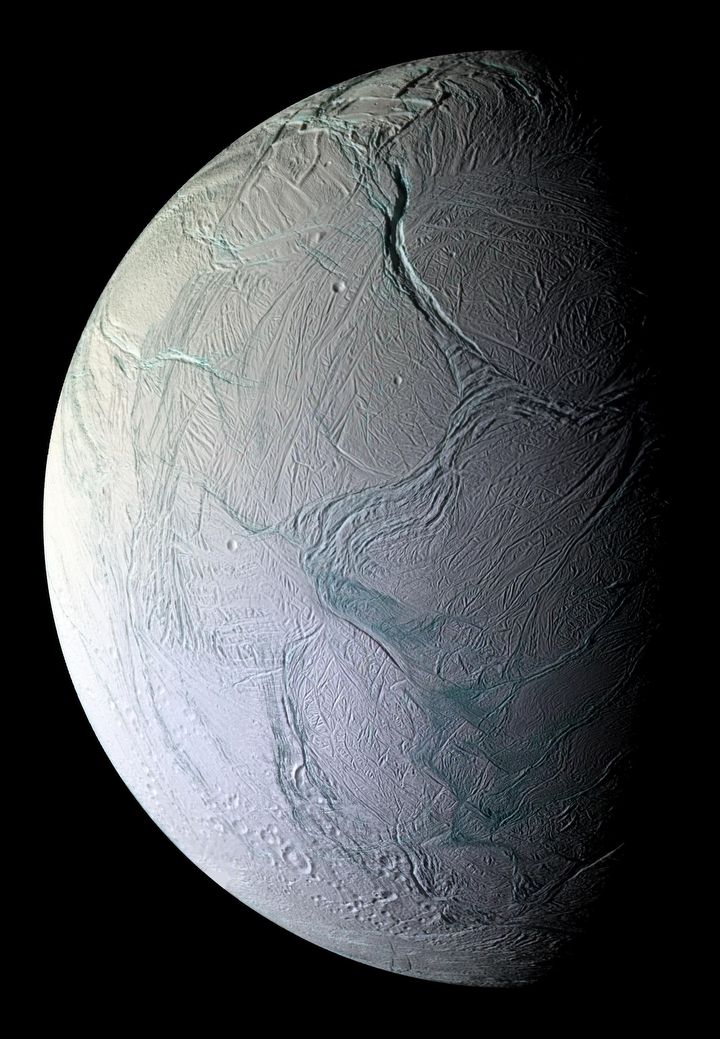
The powerful fissures in Enceladus' icy crust would certainly look spectacular from its surface.Source: NASA/JPL/Space Science Institute
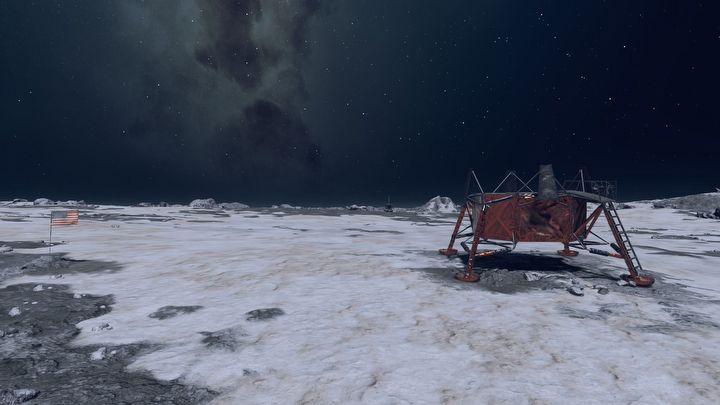
Traces of the Apollo 11 mission's landing will remain on the Moon forever.Source: Starfield / Bethesda
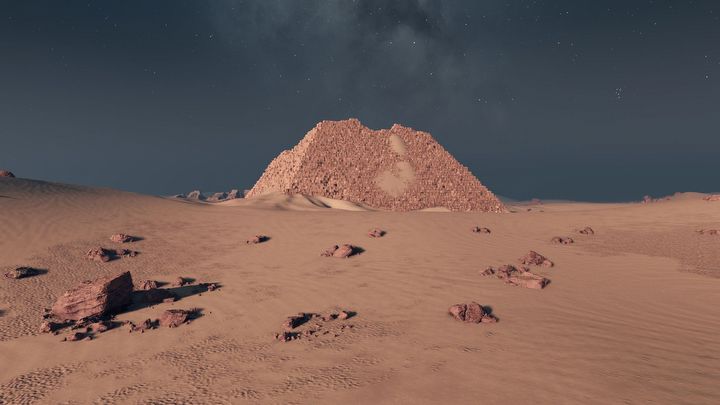
The pyramids in Starfield are still standing. The Himalayas were not so lucky.Source: Starfield / Bethesda
With this, we end the expedition around the most interesting aspects of the Starfield version of the Solar System. And what have you paid attention to while exploring the space in Bethesda's edition?
1

Author: Christian Pieniazek
Started working with Gamepressure.com in August 2016. Although the Game Encyclopedia has been his pride and joy from the beginning, he also writes for the Newsroom and the Editorial section. Gained professional experience through a now-defunct service, in which he worked for almost three years. Graduated in Cultural Studies at the AGH University of Krakow. Runs his own business, jogs, cycles, loves mountain hiking, is a fan of nu metal, is interested in space, and of course, enjoys playing games. Feels best in action games with an open world and RPGs, although won't turn down good racing or shooting games.
Latest News
- This is expected to be the biggest year in the company's history. Blizzard prepares an offensive that will overshadow previous years
- Bethesda envied CD Projekt RED? Starfield may undergo a Cyberpunk 2077-style metamorphosis
- Season 2 has just started, and Todd Howard is already writing the script for the third one. Fallout 5 will be changed by the TV show
- 5 games to grab on Amazon Prime Gaming. Among them, a collection of RPG classics
- My experience attending the 2025 Game Awards, and why I loved it
